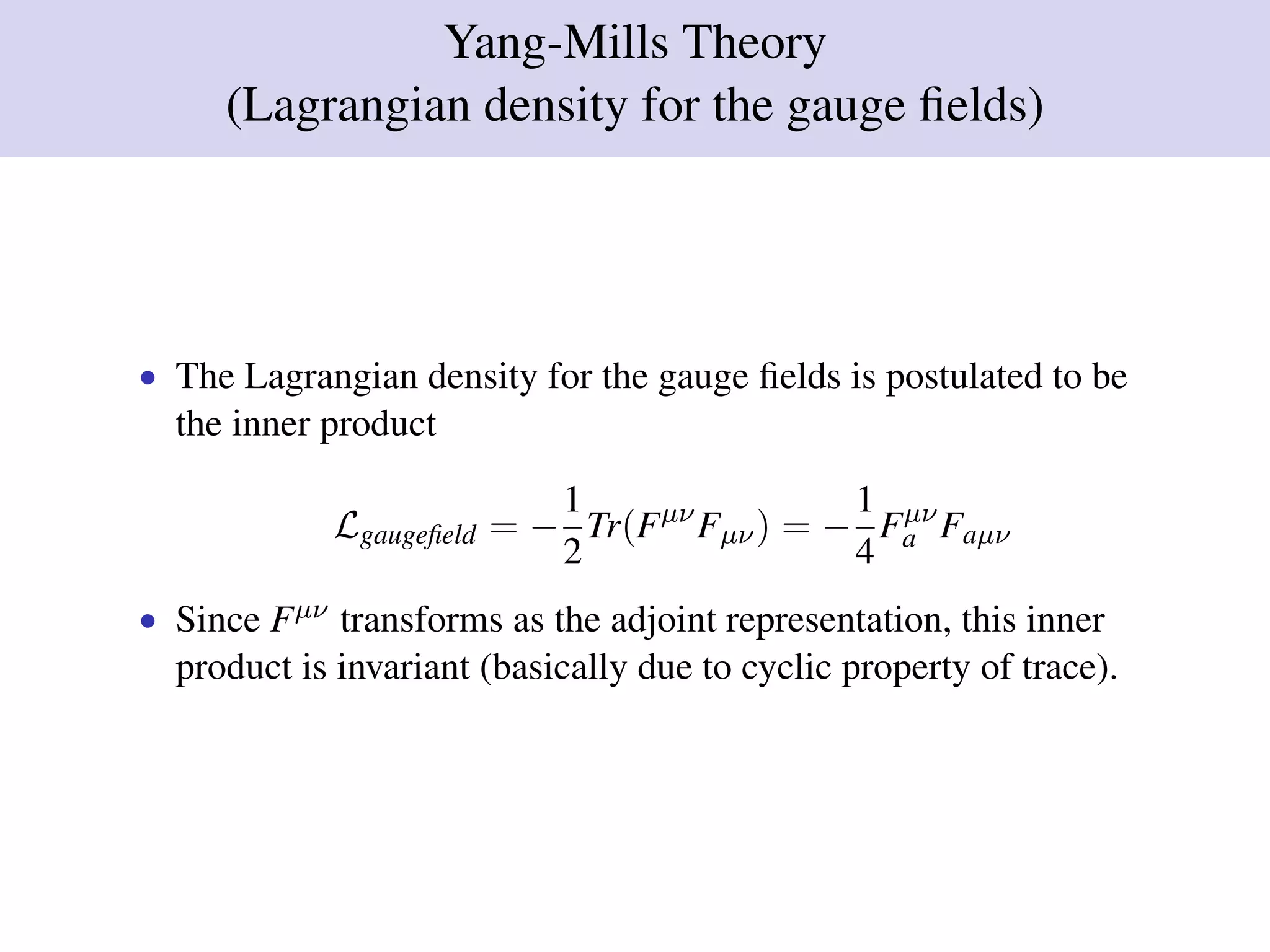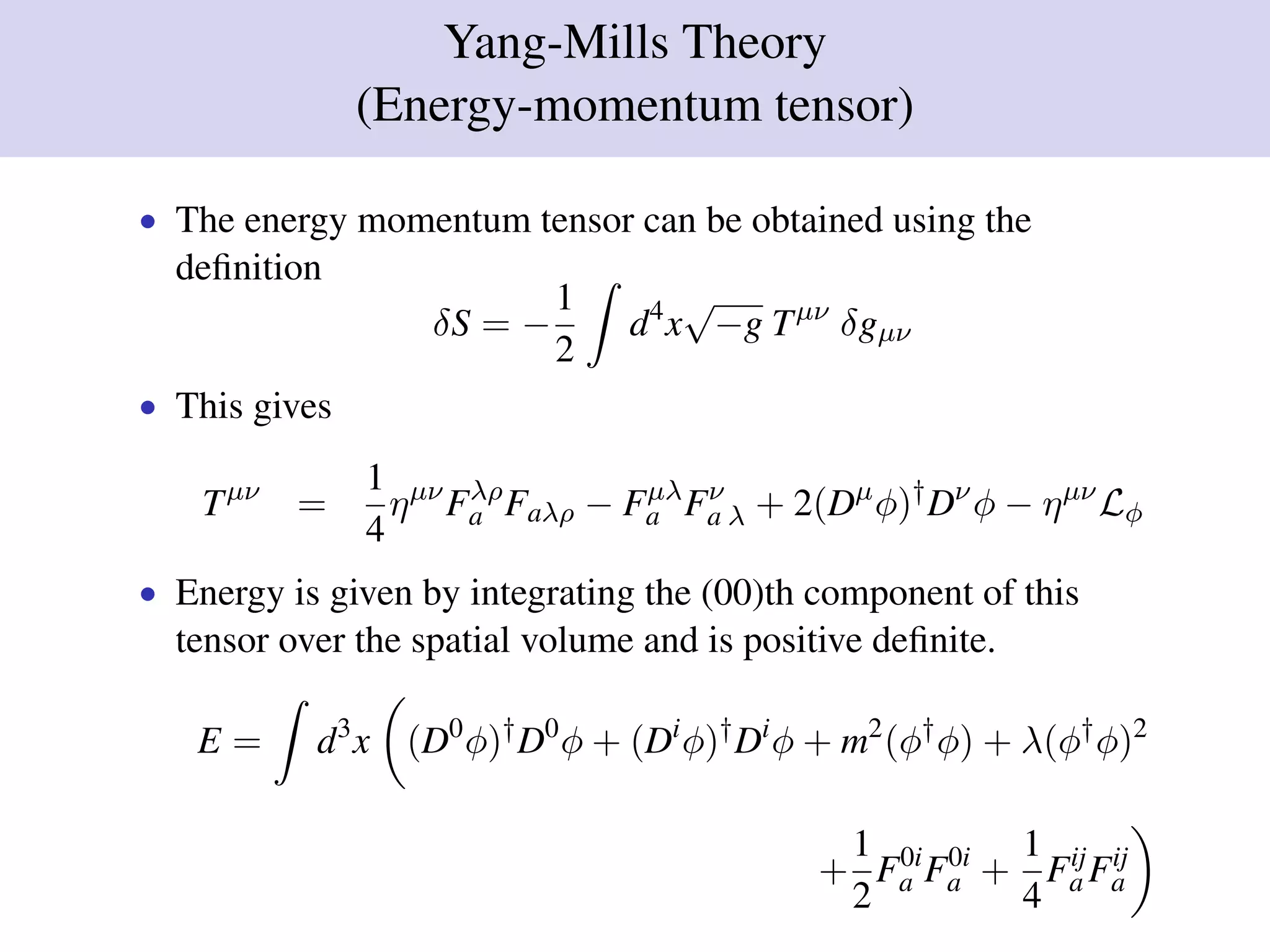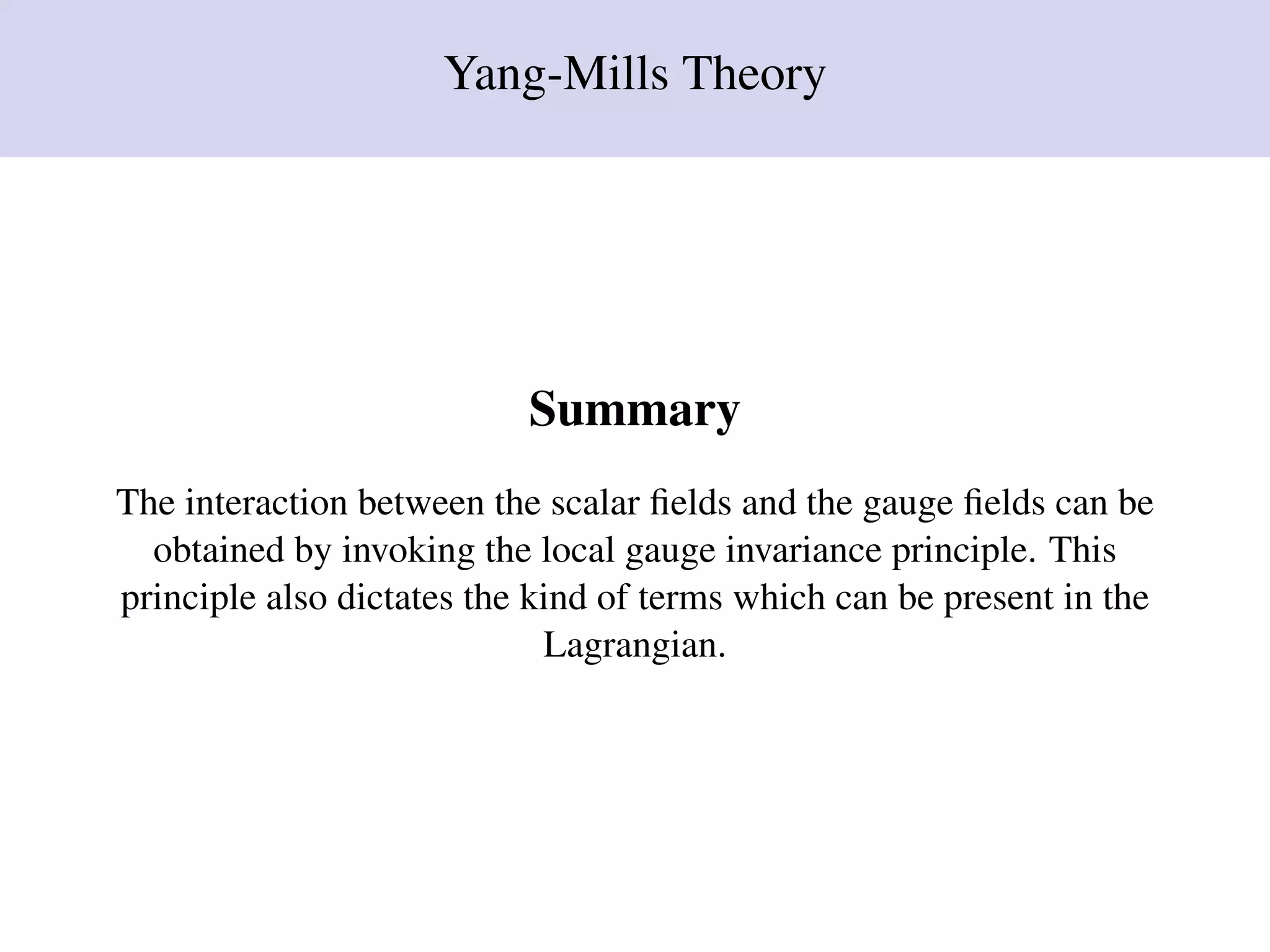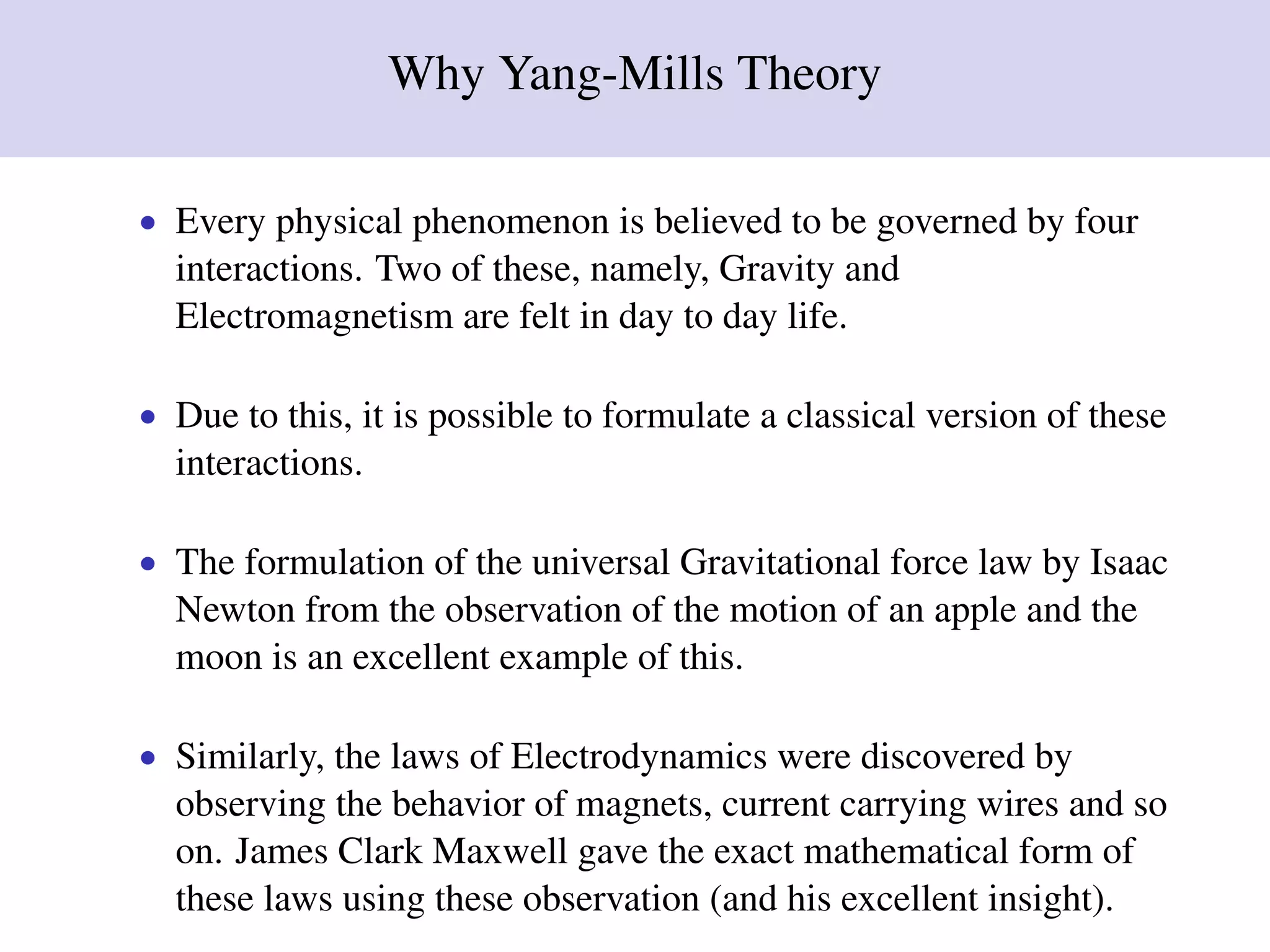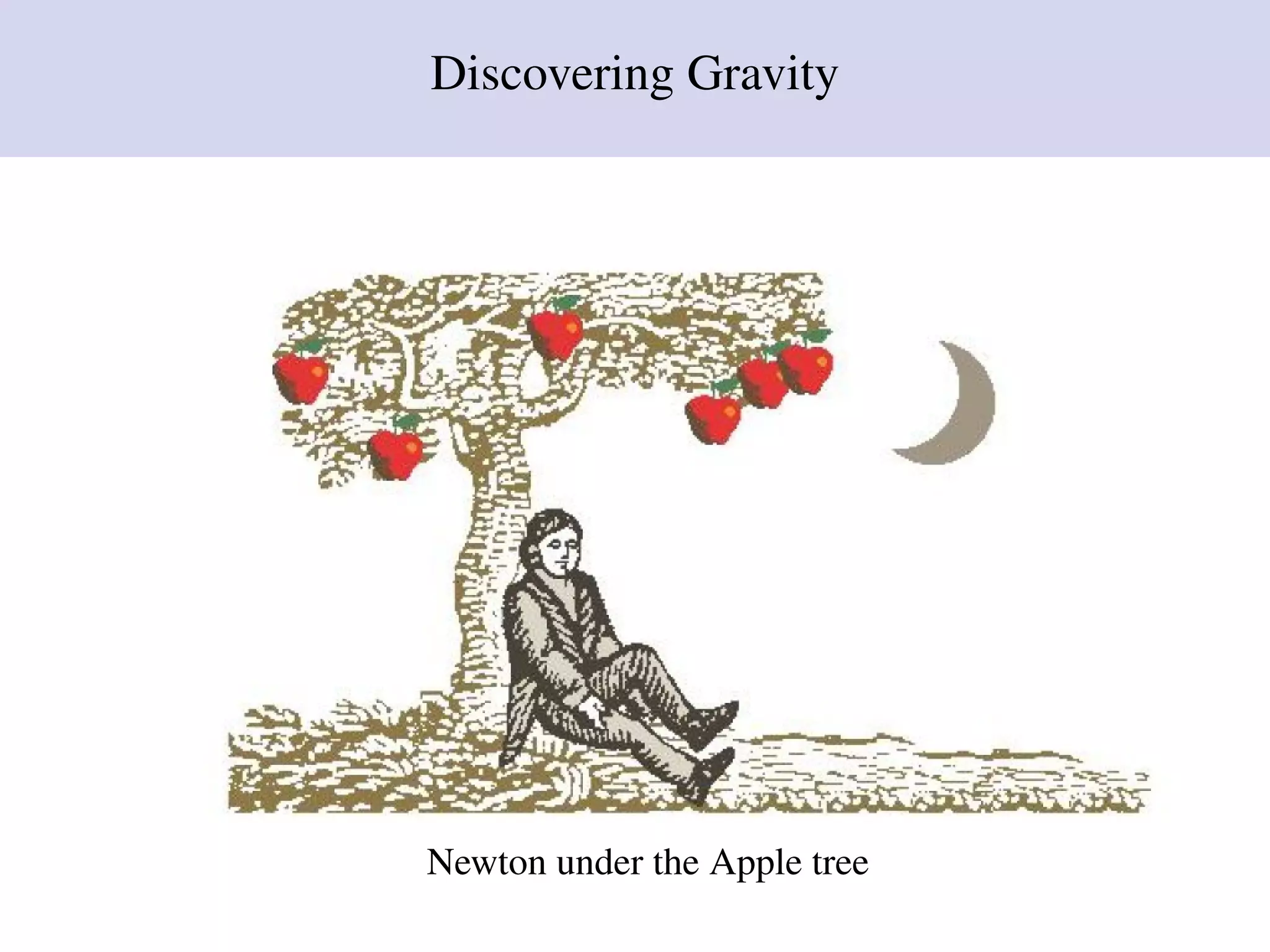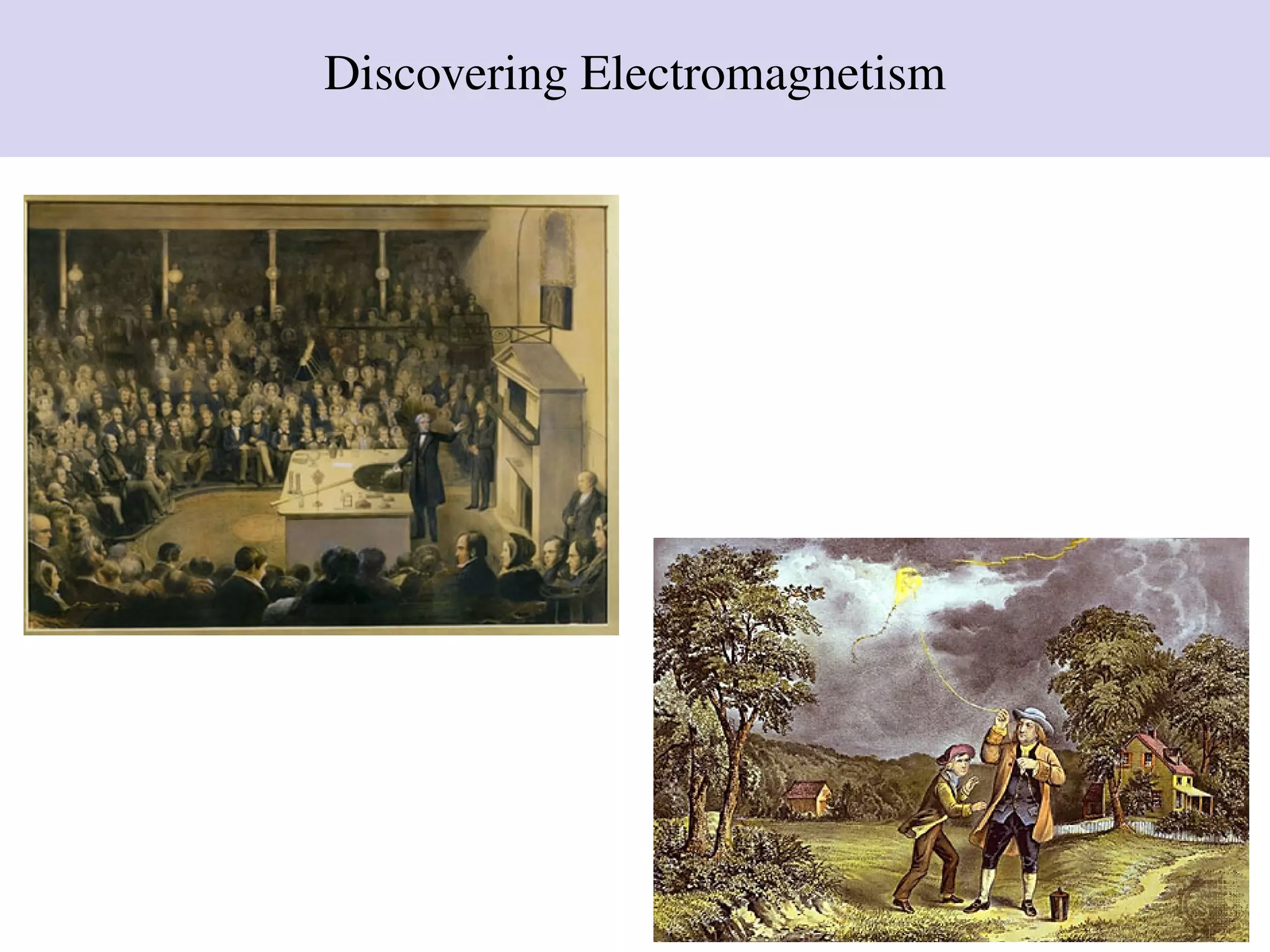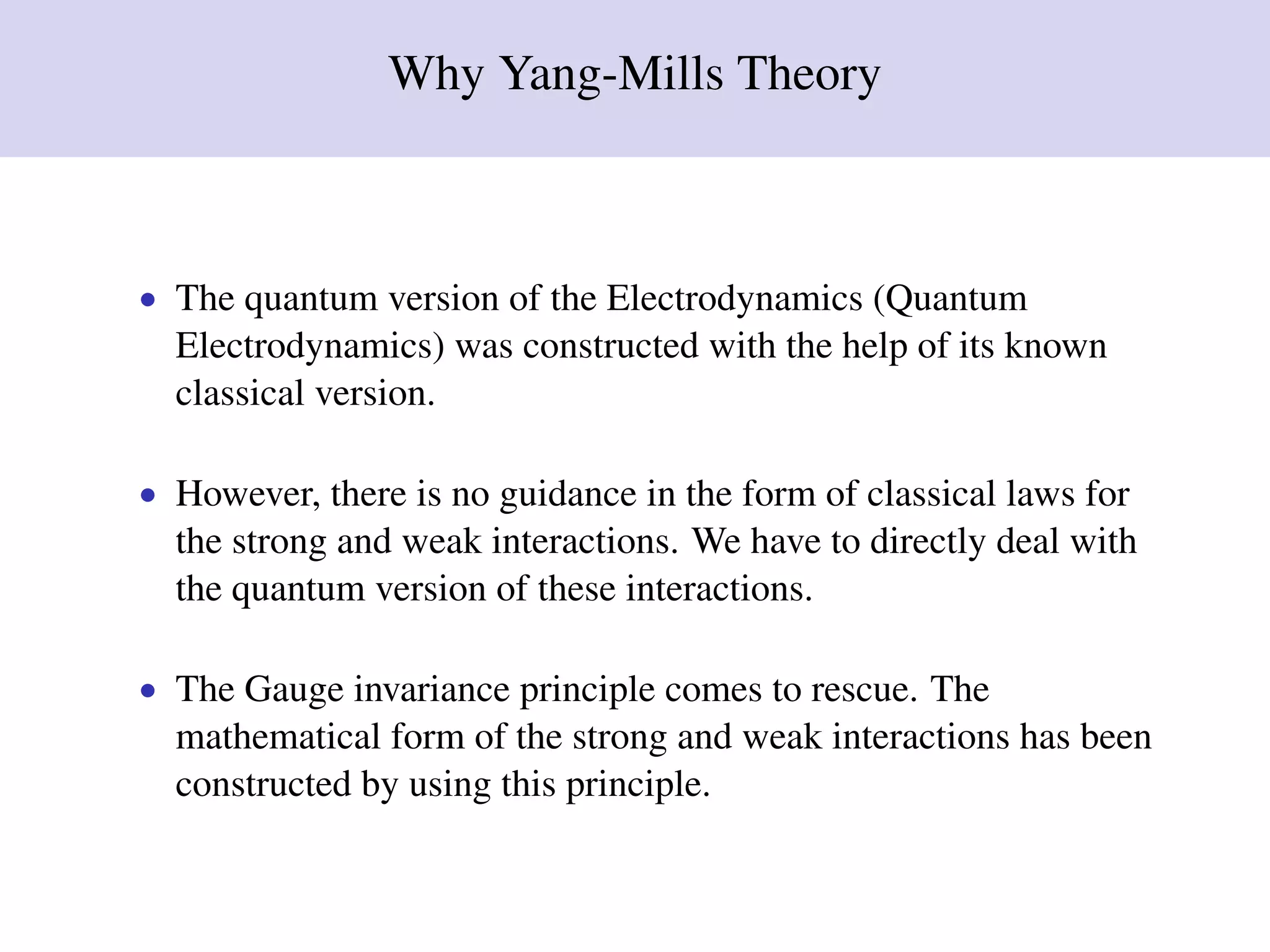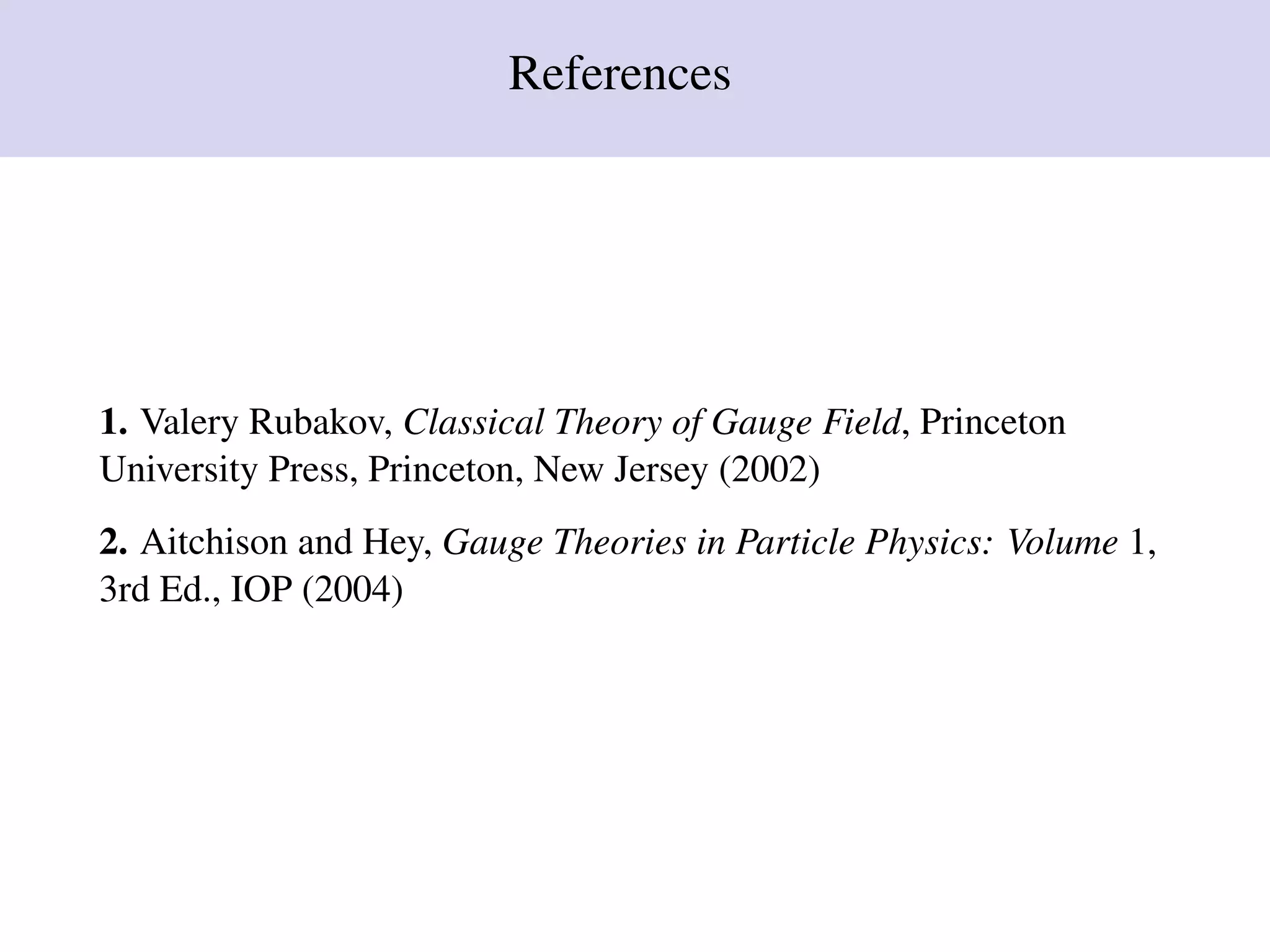Gauge field theory describes fundamental interactions through the principle of local gauge invariance. Quantum mechanics respects the gauge invariance of electromagnetic fields by requiring a simultaneous change in phase of the wavefunction under gauge transformations of potentials. Insisting on local gauge freedom in quantum mechanics forces the introduction of gauge fields that interact with particles. Yang-Mills theory extends this concept to field theories by demanding local gauge invariance of the Lagrangian density. This dictates that gauge fields belong to the Lie algebra of the symmetry group and interact with matter fields through covariant derivatives. The Lagrangian includes terms for gauge fields constructed from an invariant field strength tensor.


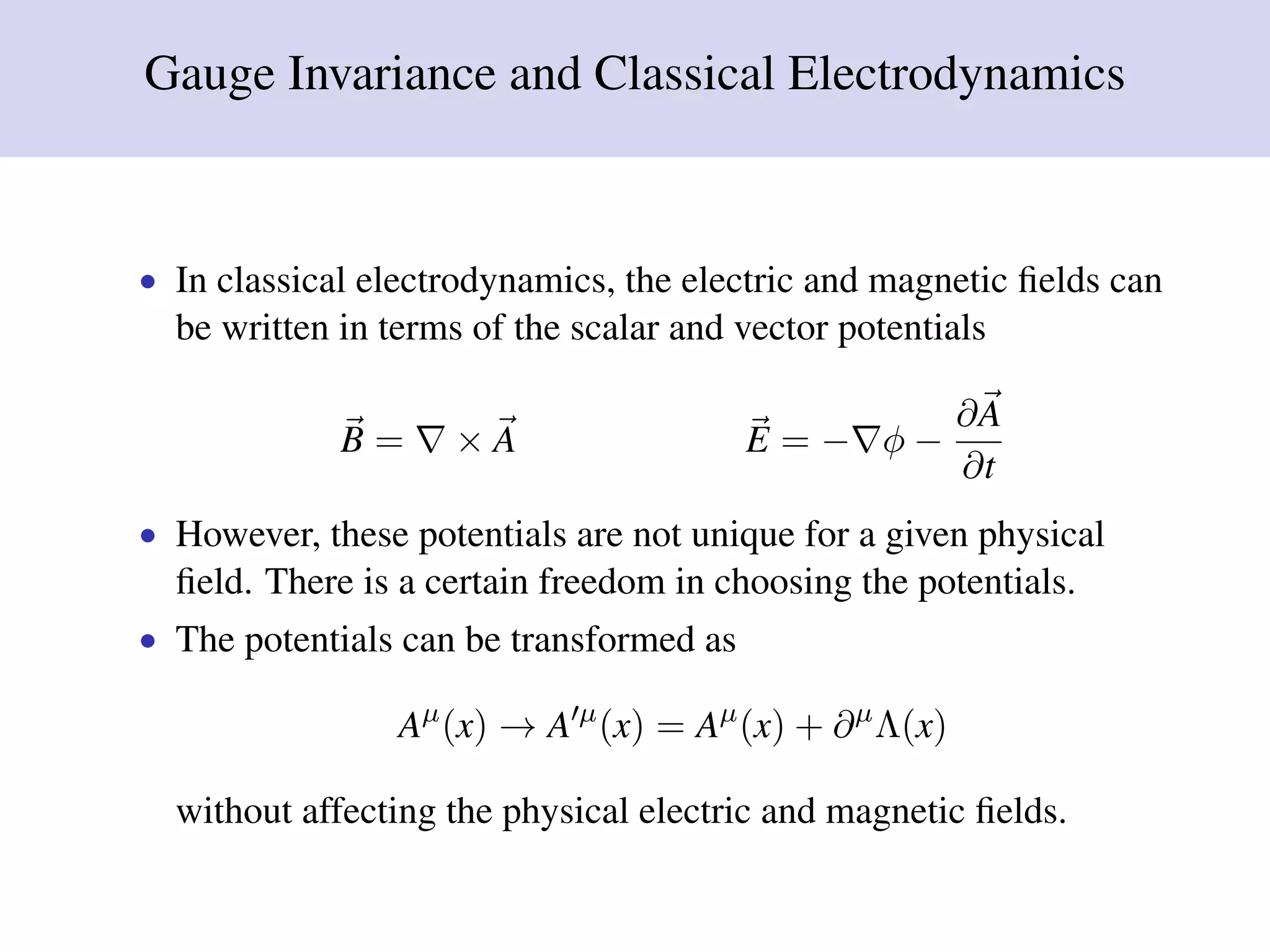
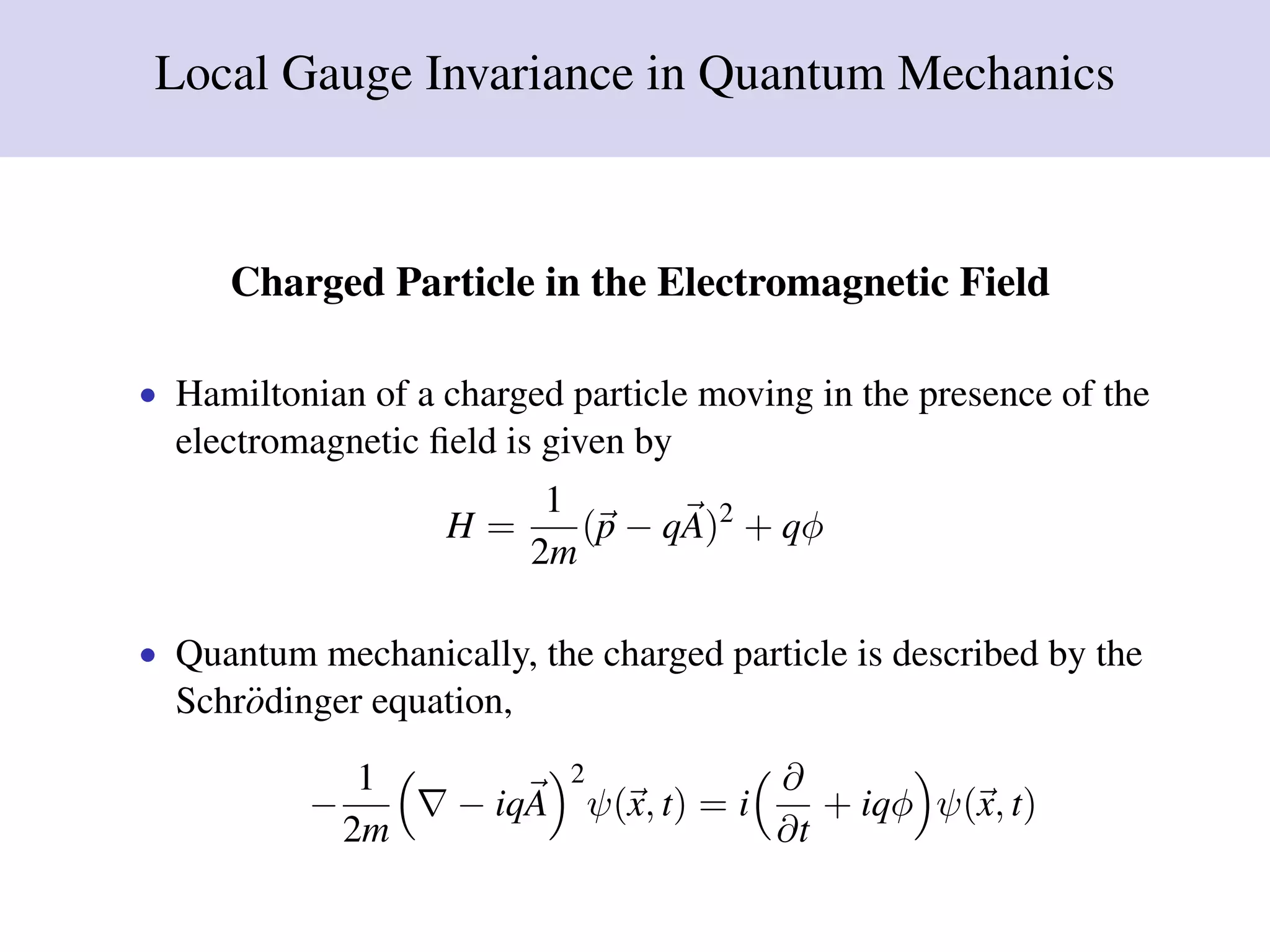

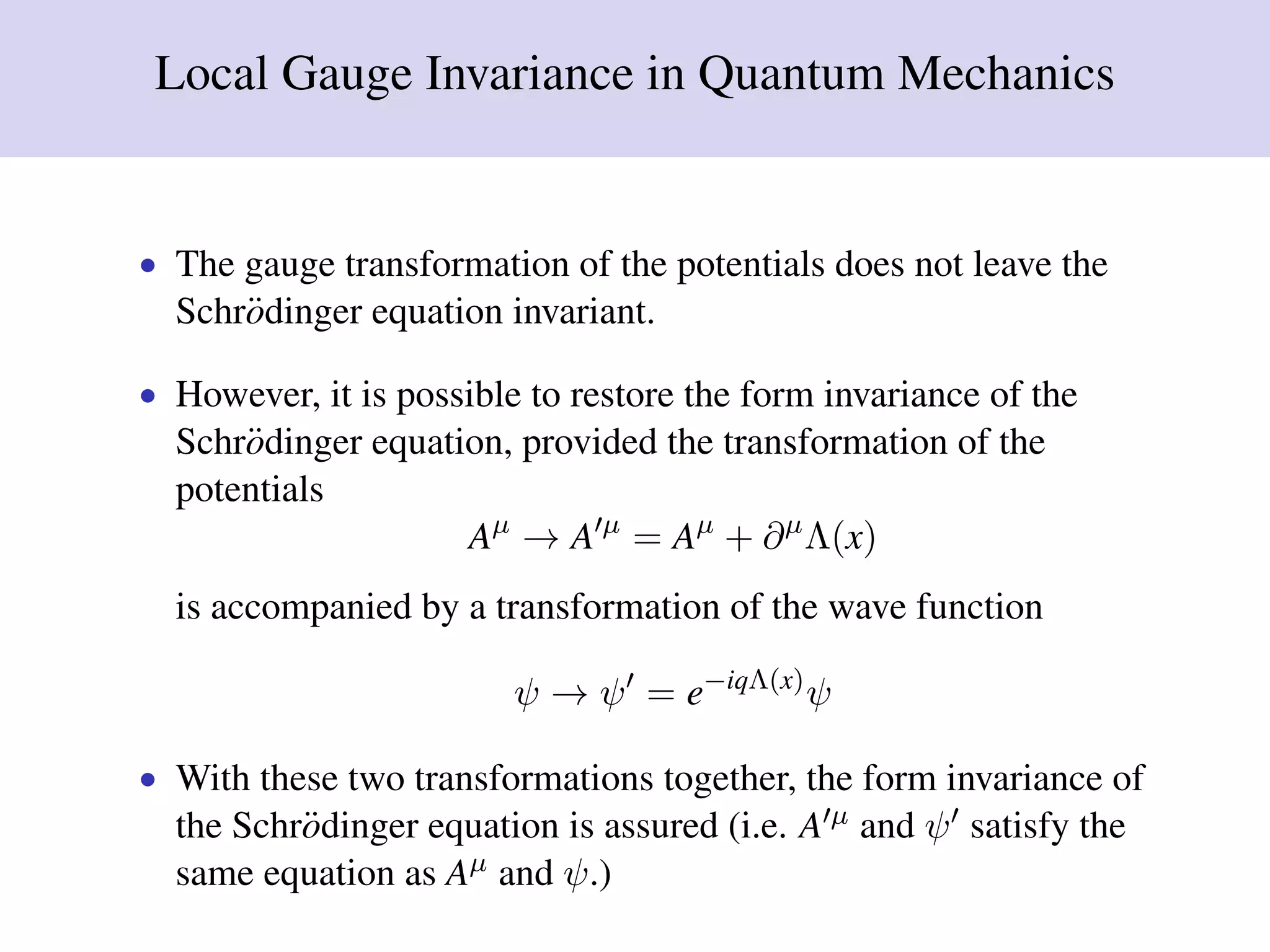
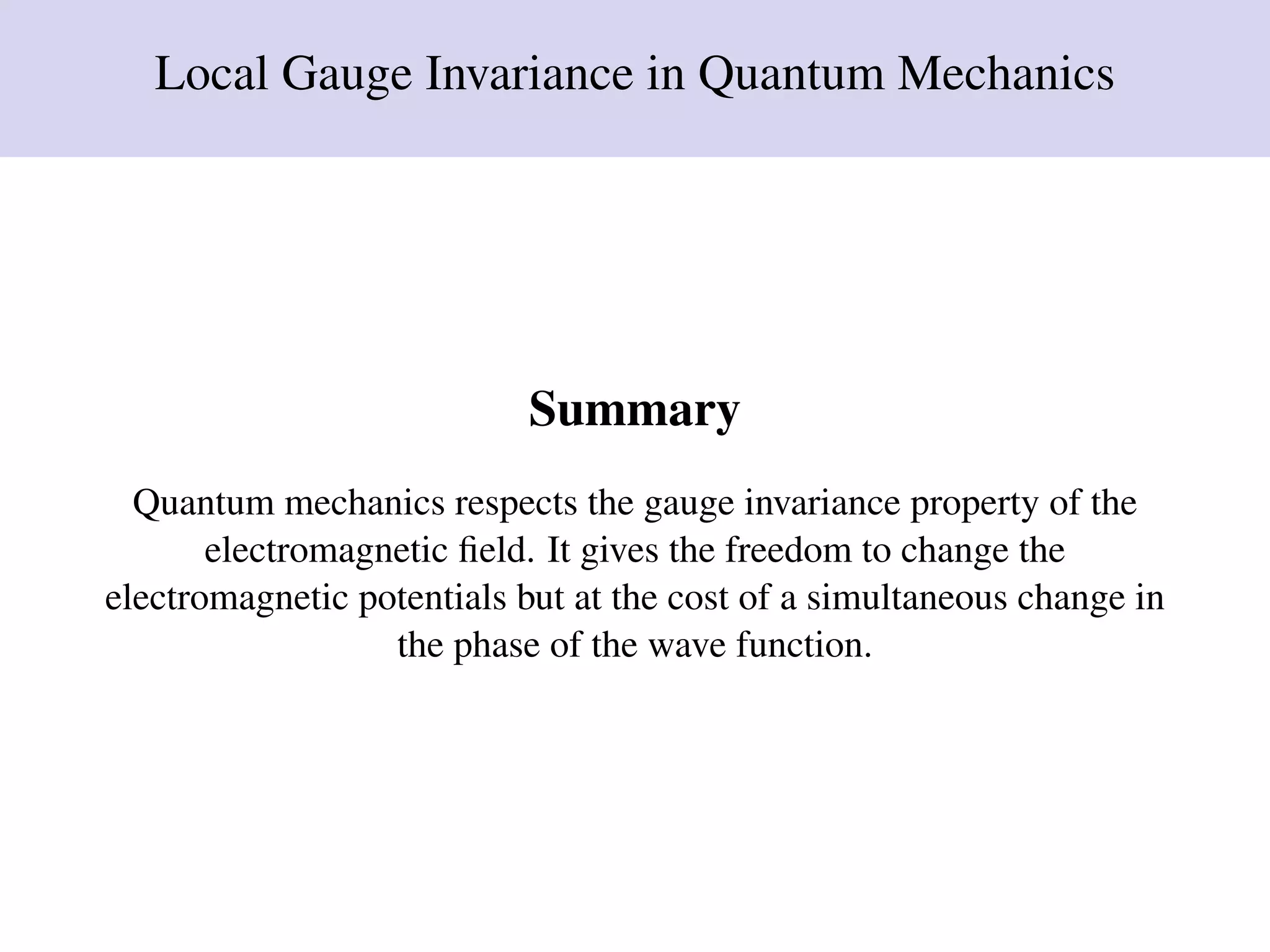
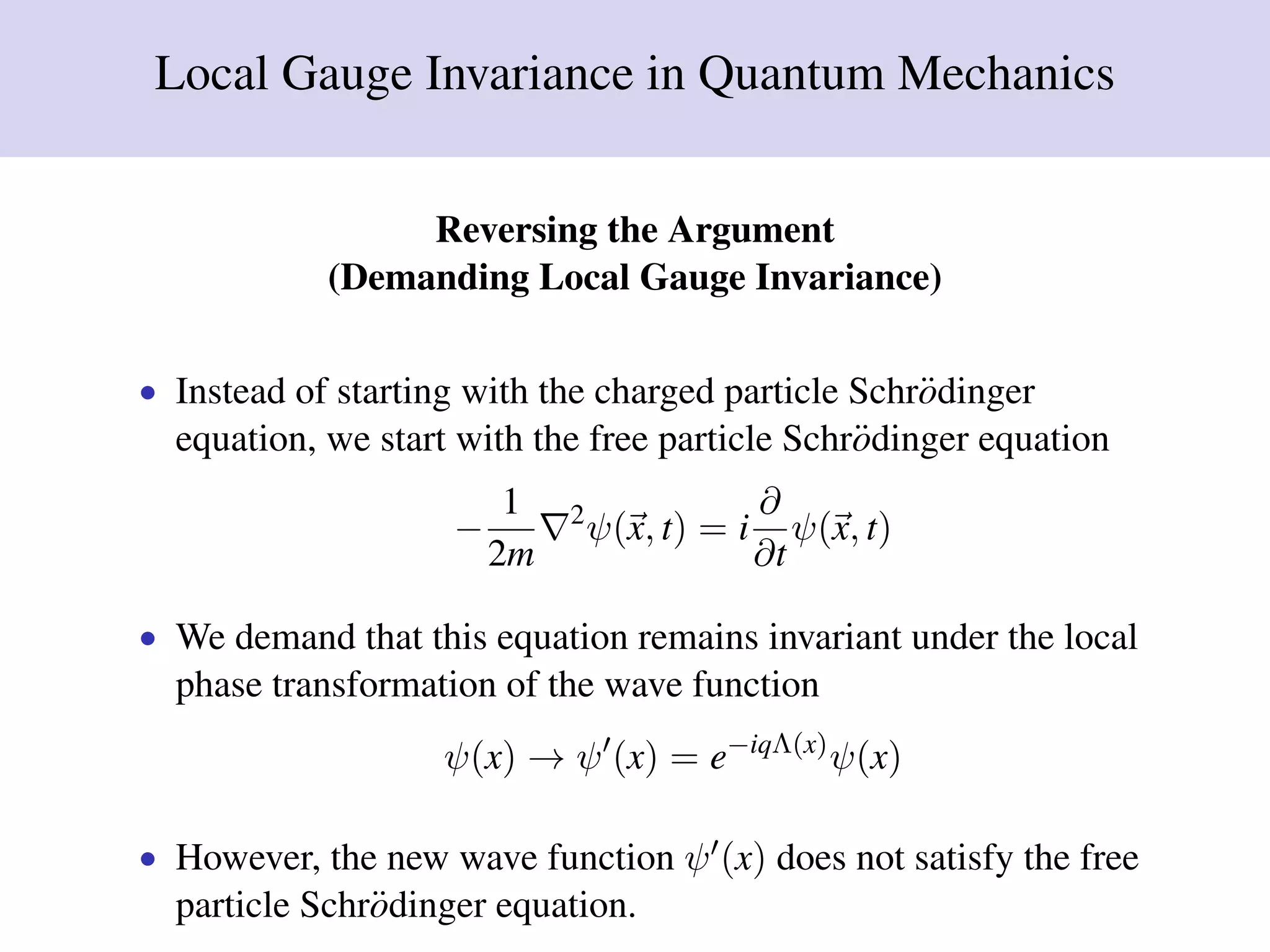
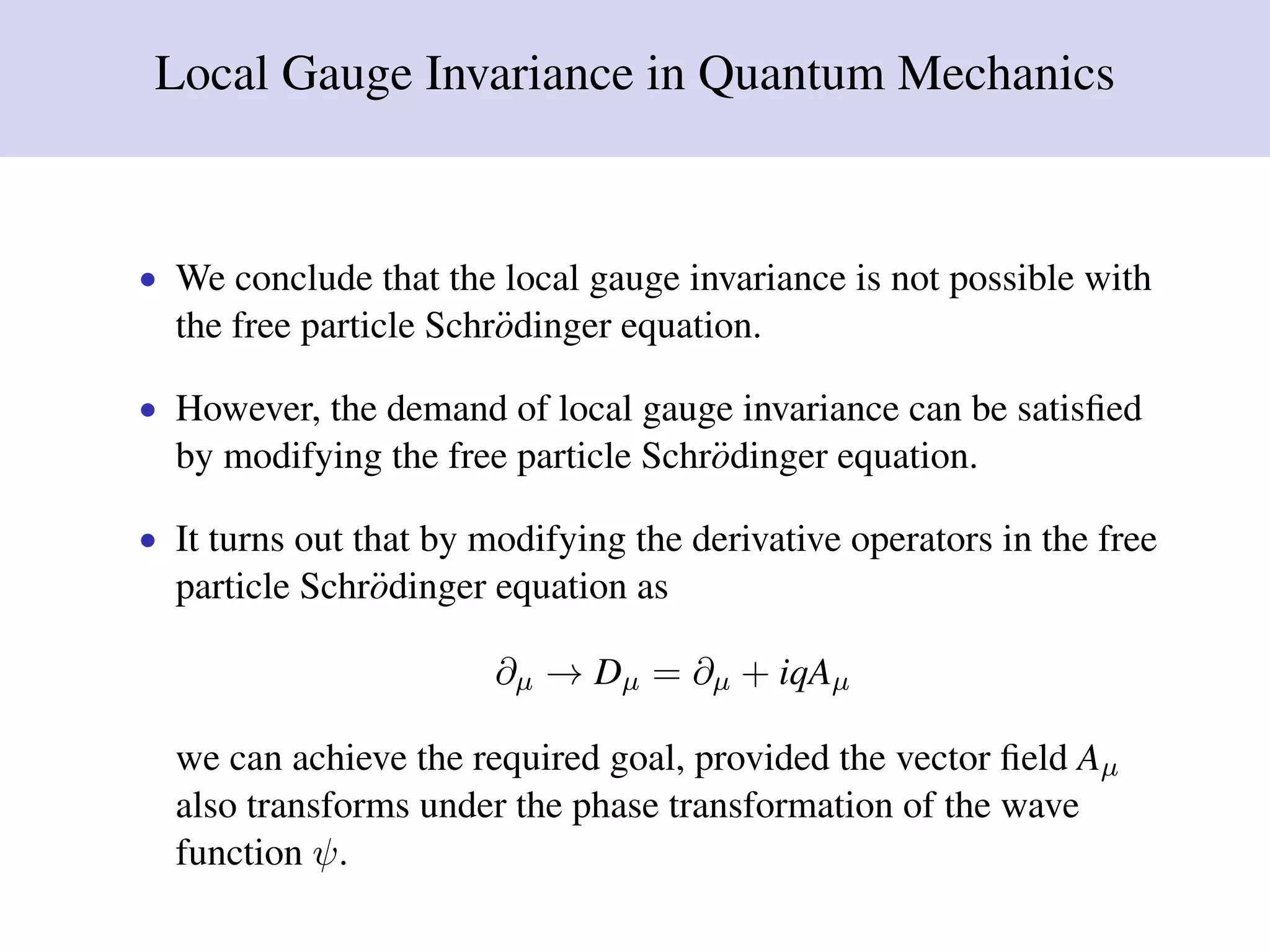
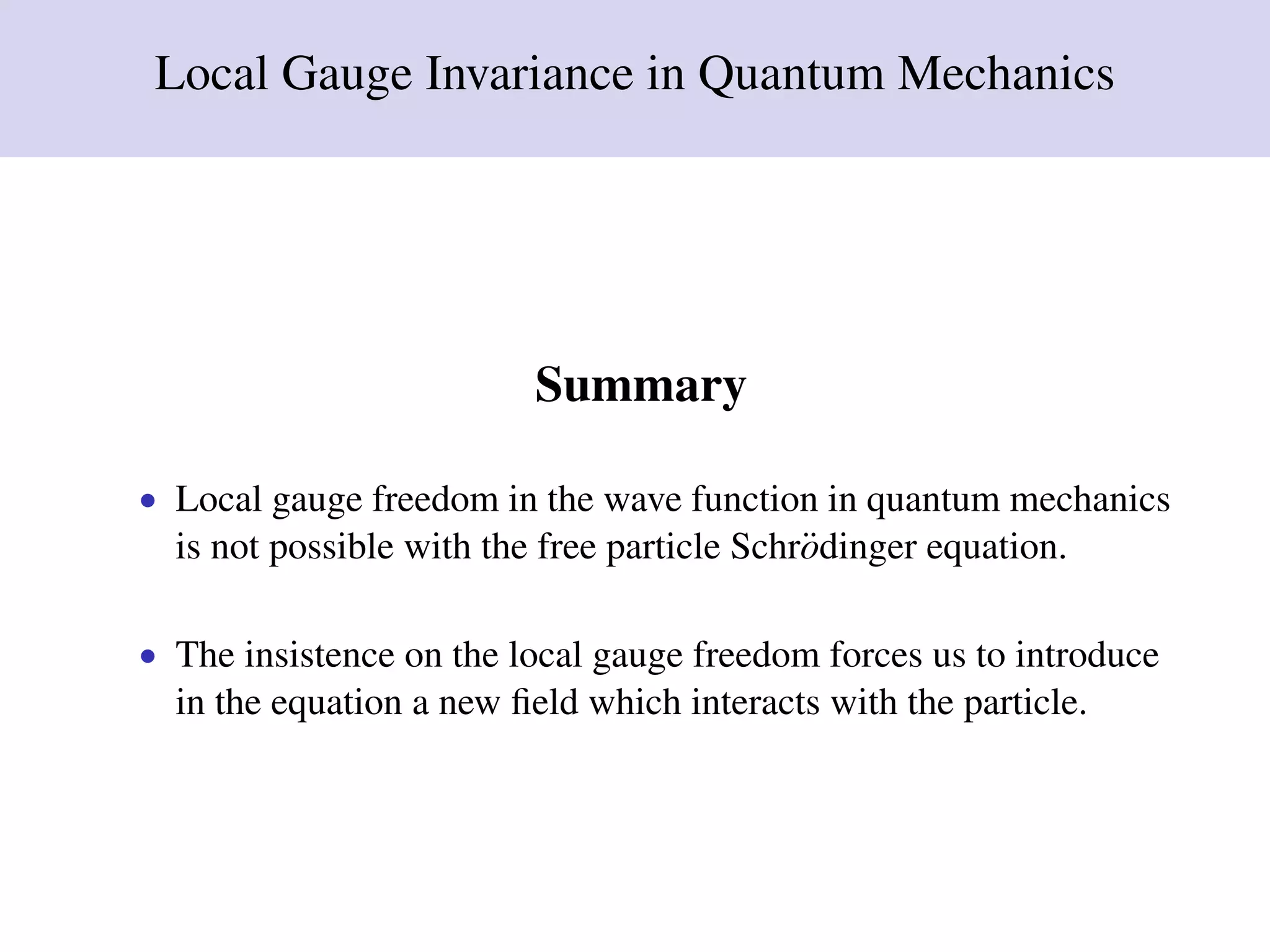
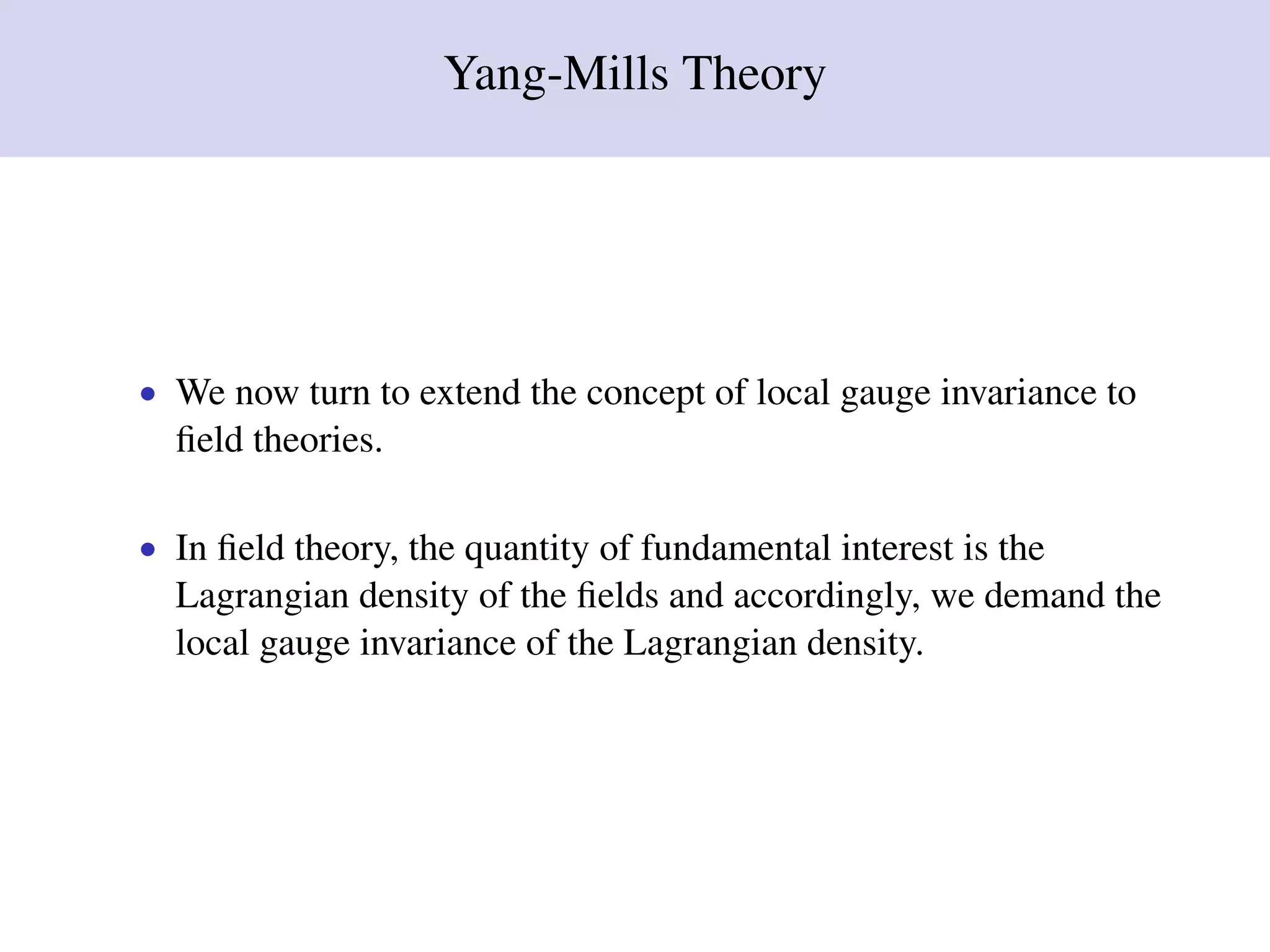
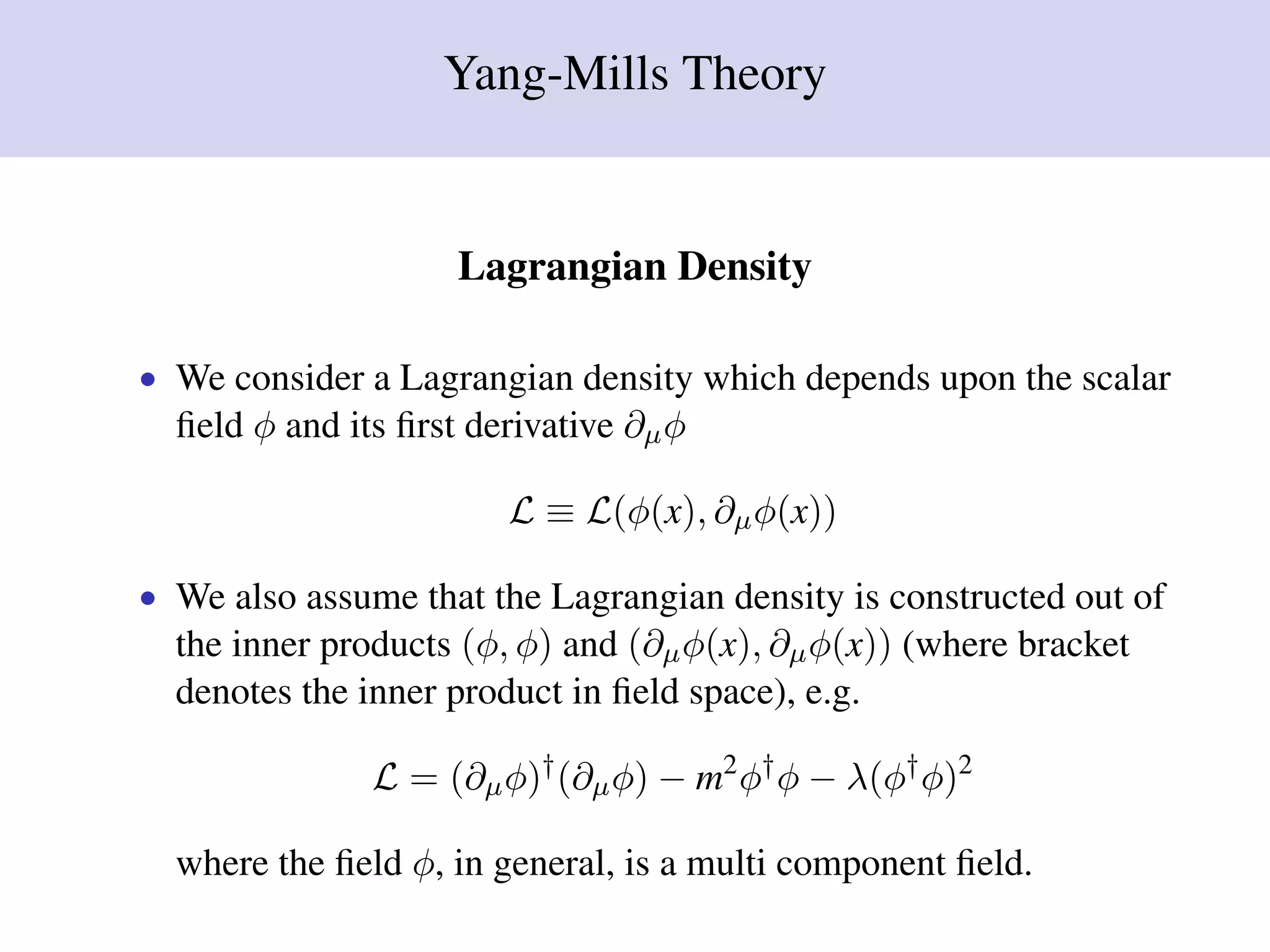

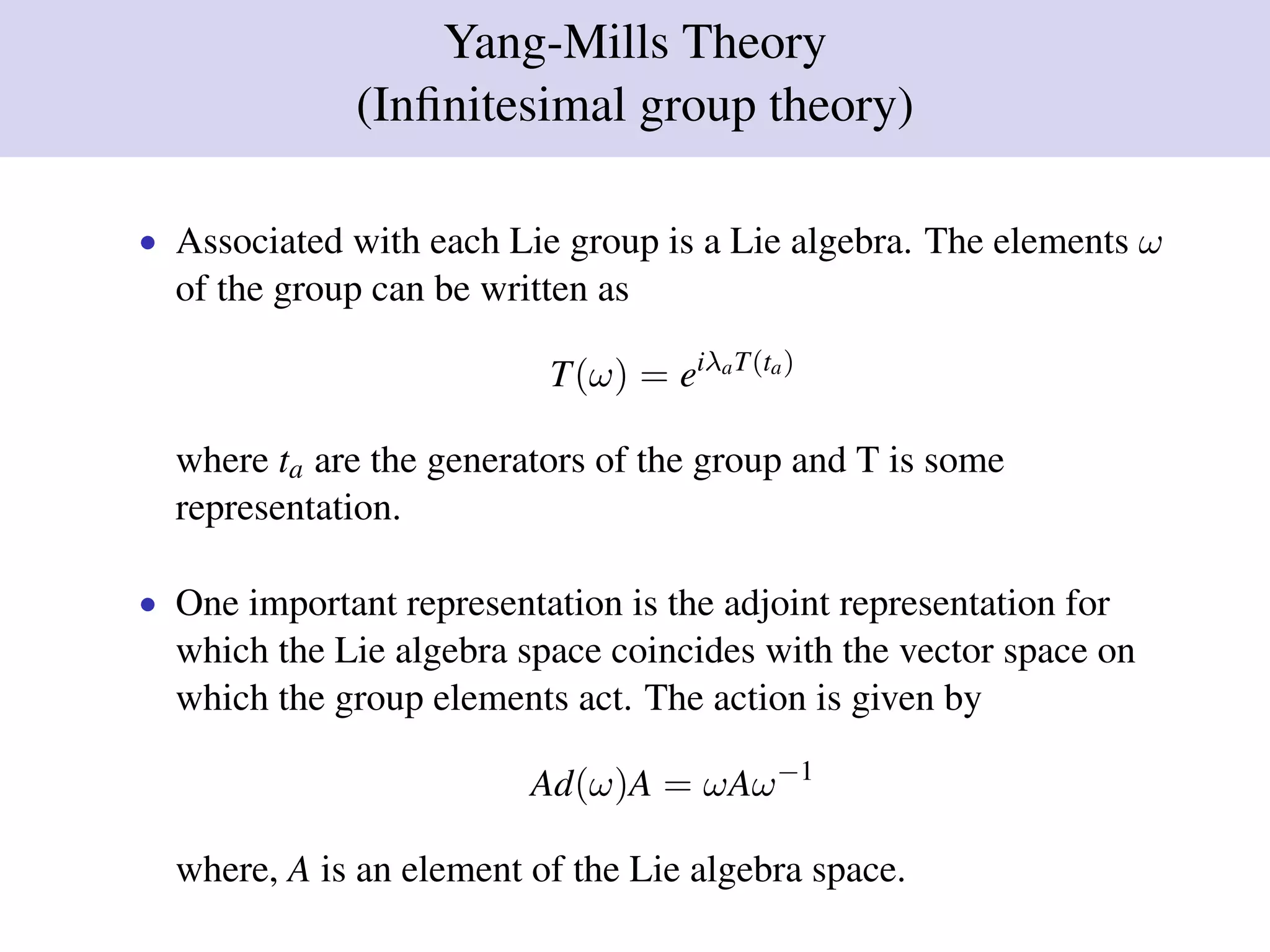
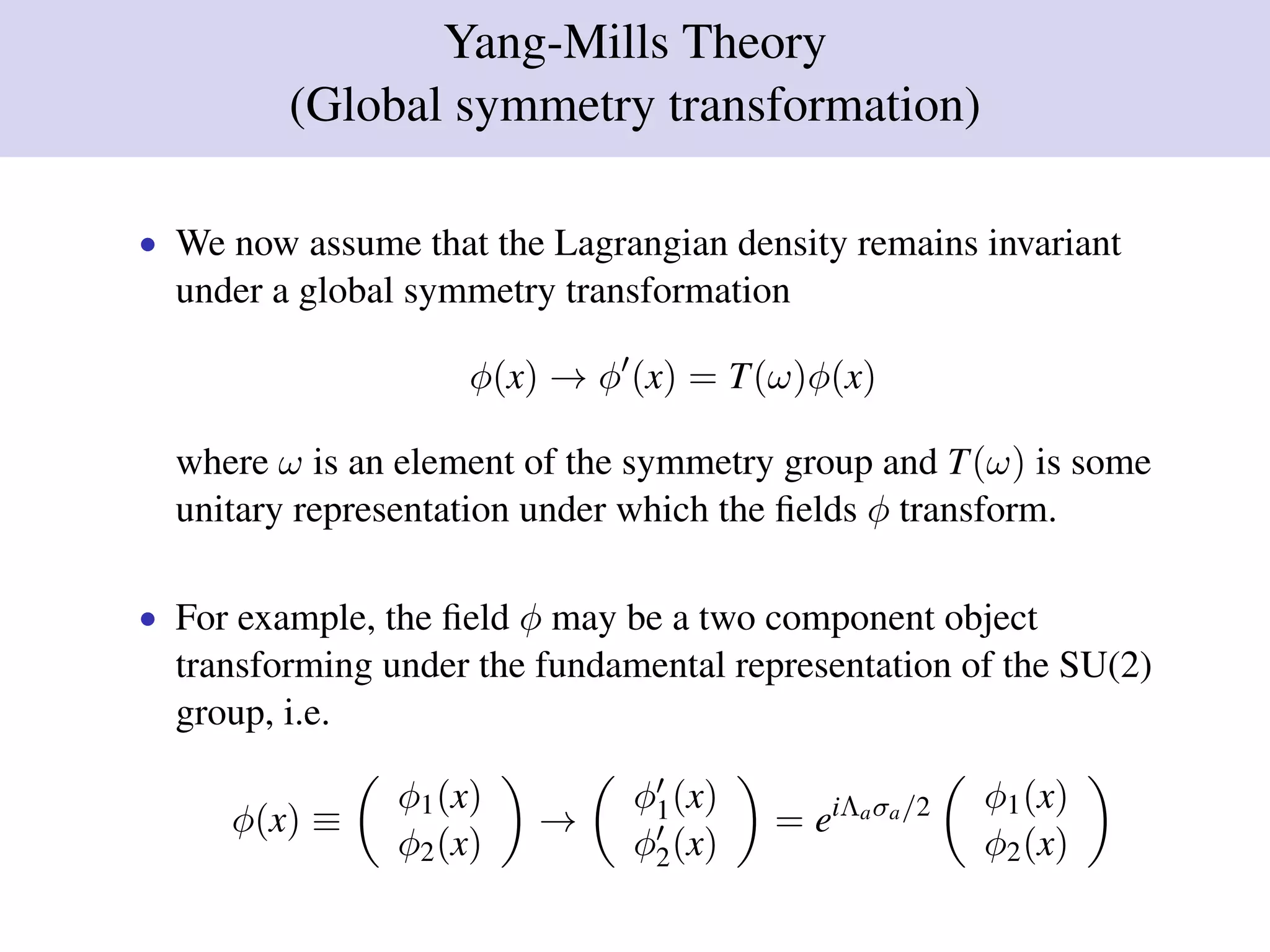

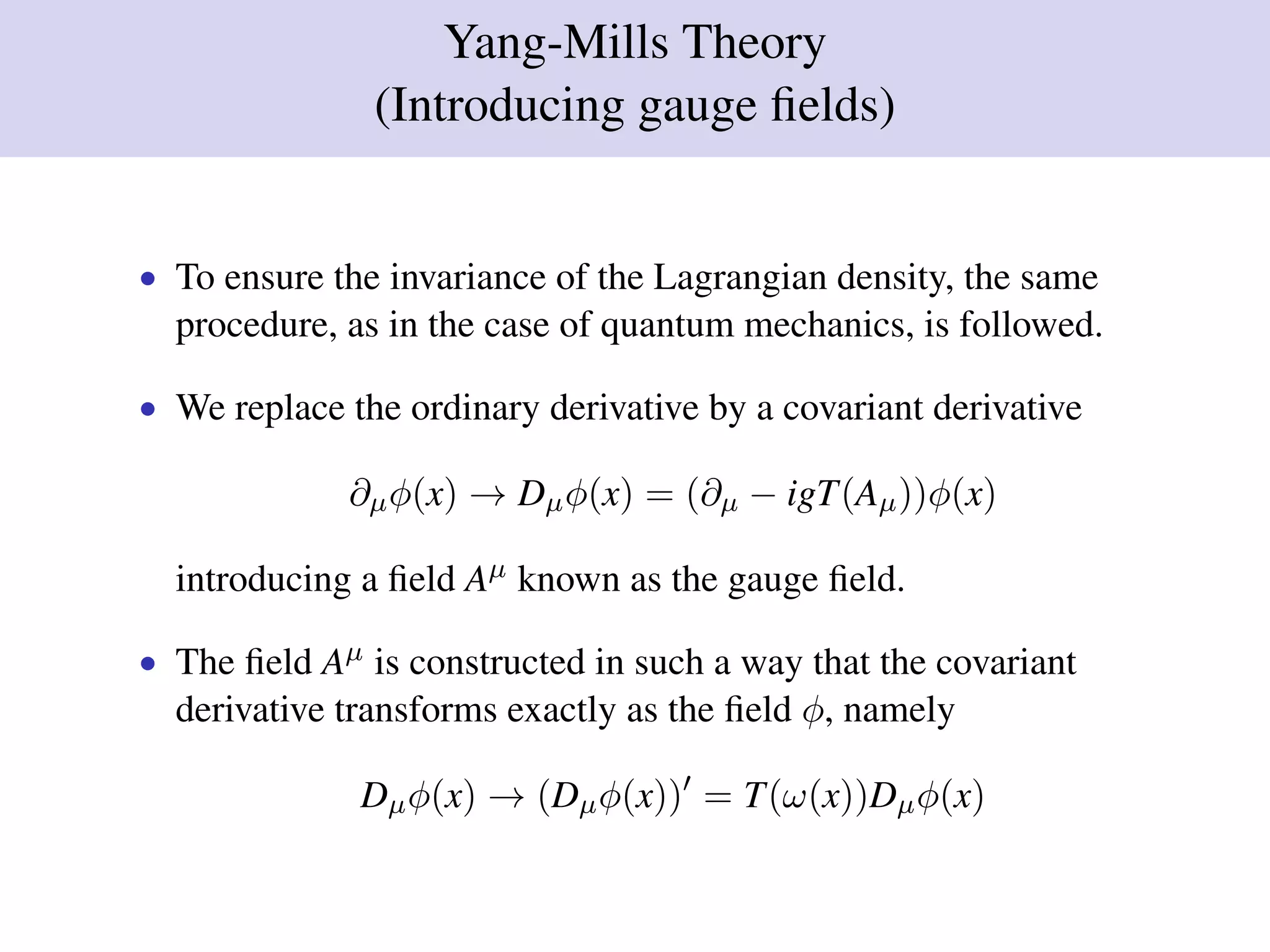

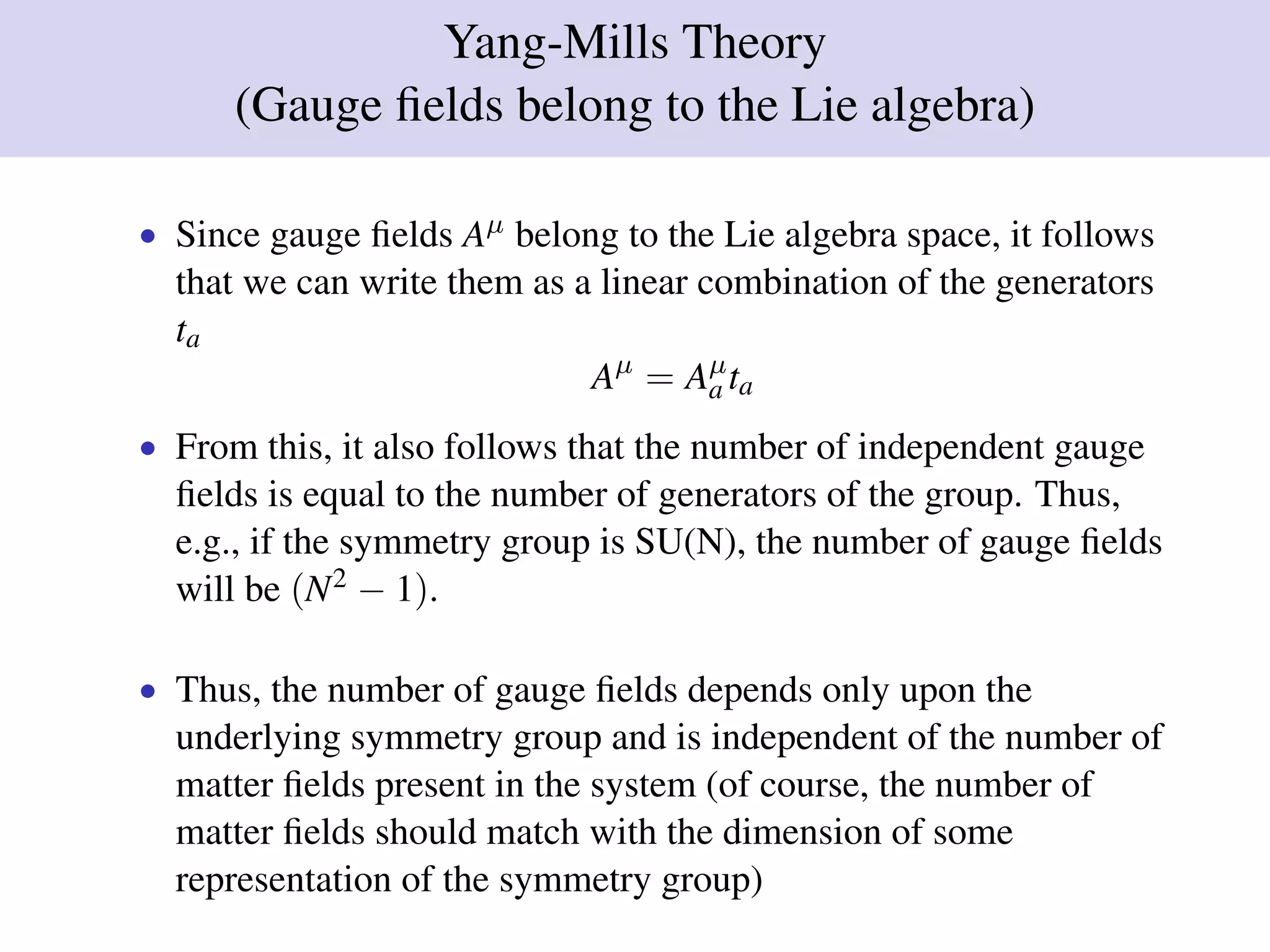
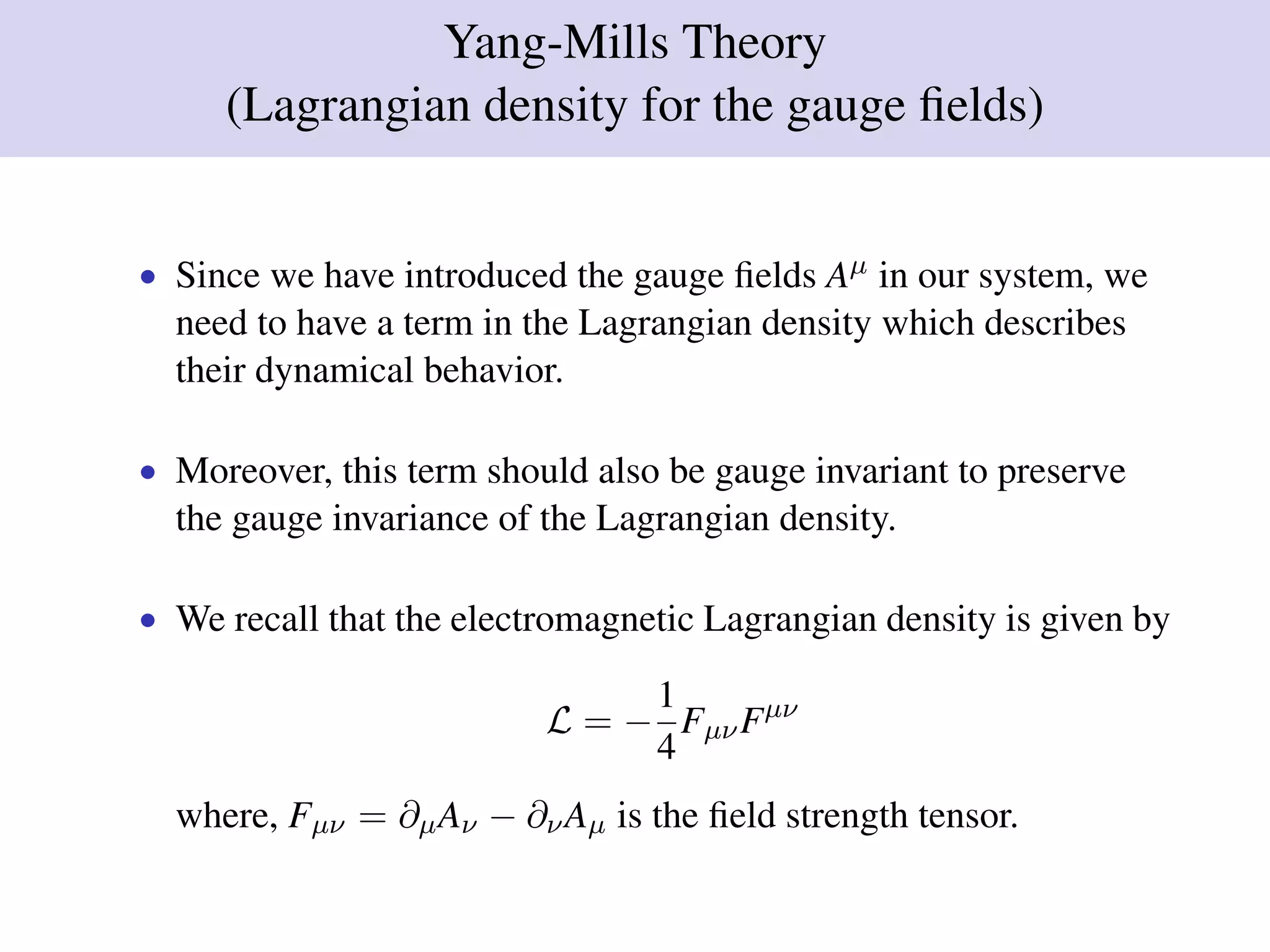

![Yang-Mills Theory
(Lagrangian density for the gauge fields)
• This demand leads to the field strength tensor
Fµν = ∂µAν − ∂νAµ − ig[Aµ, Aν]
• Since Fµν belongs to the Lie algebra, we can write it as a linear
combination of the generators
Fµν
= Fµν
a ta
• In terms of the components Aµ
a and Fµν
a , we have
Fµν
a = ∂µ
Aν
a − ∂ν
Aµ
a + gfabcAµ
b Aν
c
• This differs from the electromagnetic case by the presence of a
non linear term.](https://image.slidesharecdn.com/presentationgaugefieldtheory-130912004424-phpapp01/75/Presentation-gauge-field-theory-22-2048.jpg)
